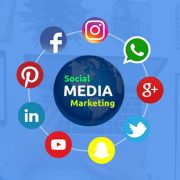The logo and color scheme of a brand can be easily remembered. In order to capture the attention of your audience, you need to communicate your values, products, and objectives via your appearance.
Ask your team questions about brand identity if you haven’t done so. It will focus your efforts and make them memorable and cohesive. You may have spent a lot of time and money creating your brand’s identity, but you are not getting the results you expected. It may feel outdated or irrelevant. These questions will help you and your team get back on track.
Let’s start with the basics.
What is Brand Identity?
The visual components of a company are called brand identity. This includes:
- Brand Name: A brand’s name is the name that it is known by.
- Logo: An attractive and unique symbol or design that represents the brand. Logos often include elements like colors, typography, and images that communicate the brand’s personality and values.
- Tagline: A memorable, short phrase or slogan that captures a brand’s essence and positioning.
- Colors Specific color palettes are used consistently across different brand elements. They can evoke feelings and help to establish brand recognition. Think of the Coca-Cola red or the black of Nike.
- Typography: The fonts and typographic style that is used consistently across brand communications. Typography can convey a variety of personalities and tones.
- Visual elements These include images, icons, patterns, and other observable factors that contribute to the visual identity of the brand.
- Tone: Style and manner of communication of the brand, including language, vocabulary, and overall writing style. The brand’s personality should be reflected in the tone of voice.
- Brand messaging and values: The brand’s core values, mission, and vision, as well as the narratives and messages it uses to reach its audience.
These elements, when combined and applied consistently across different brand touchpoints, create an image that helps customers recognize, remember, and form associations with your business.
It is the first thing that potential customers notice and will base their decision on. There is a lot of competition in every industry, so people don’t have the time to research the best businesses for them. Your visual elements must help your customers make quick choices and choose your product.
Three essential questions about brand identity
In order to encourage conversions and foster customer loyalty, businesses need to create a strong brand identity. Where do you begin?
Your strategy should begin with figuring out the brand story of your company. You’ll have to ask the business you are working with a series of questions you have created to determine your company’s brand message. You’ll learn how to make your brand identity by answering these questions as a group. Let’s get started with the best questions.
- What is your unique value proposition?
This statement clearly defines the services and products that your company offers to customers. This statement should explain how your company’s value is different from that of your competitors. What makes you unique?
You will be able to form a strategy to communicate your message once you have a clear understanding of this and a statement that is well-written to remind your staff. Your UVP will form the core of your brand, so you will use it to inform your logo design, your name, your color scheme, and much more.
If your UVP is a commitment to sustainability or environmental concerns, your logo will likely reflect this. You’ll probably choose natural colors such as greens, browns, and blues for your marketing materials.
- What is the personality of your brand?
It is important to ask this question when you are dealing with content marketing, as it will affect how your customers perceive your brand and how you interact and communicate with them. There are five types of personalities:
- Ruggedness
- Sincerity
- Competence
- Sophistication
- Excitement
You can find a list of common traits for each personality below. After you decide which character best represents your brand and your ideal client, you’ll know what brand voice to use and how you should be on social media.
- Can You Picture Your Ideal Customer?
All aspects of your brand should be focused on attracting the ideal customer. You can’t do this if you don’t know who your perfect customer is. These questions can help you visualize your audience.
- What is the age range of your audience?
- What is the average income of these people?
- What do they do during their free time?
- Are they a family?
- What career are they likely to have?
- What gender does the person identify with?
- Where will they most likely live?
Brand Image vs Brand Identity
In-person, this is a great piece of advice. This is not true when it comes to branding. Your success depends on how others perceive you.
Even if your values are strong and you have a great origin story, it can be difficult to prove yourself again once a bad reputation has been established.
All is not lost. Brand image and brand identity are important – but they’re different!
You can only win half the battle if you are confident in your brand. You can achieve long-term success by fostering a positive brand image.
Continue reading to learn more about branding and the differences between image and identity. When you know how to use both, you’ll have a brand that’s a household name in no time.
What is Brand Image?
Brand image refers to how potential customers, stakeholders, and employees view you.
It is important to have a strong brand image. This requires a lot of time and research. If you don’t reflect your claims in your business practices, products, or services, then your brand image will be left to the collective. If you make too many false promises, your customers will become the judge, jury, and executioner.
If you claim that your strawberries are the best in the nation (and have a catchy logo and slogan to go with it), then you need to be able to prove this claim. If your strawberries are always moldy or delivered late, the brand image that you built in the conference room is not going to last.
Soon, the word will spread, and your existing customers will share their disappointment with you. This can lead to a bad brand image, a drop in revenue, and many other negative outcomes.
Brand image is influenced by many factors that are outside of the control of a company. We’ll look at a few of them.




















Comments